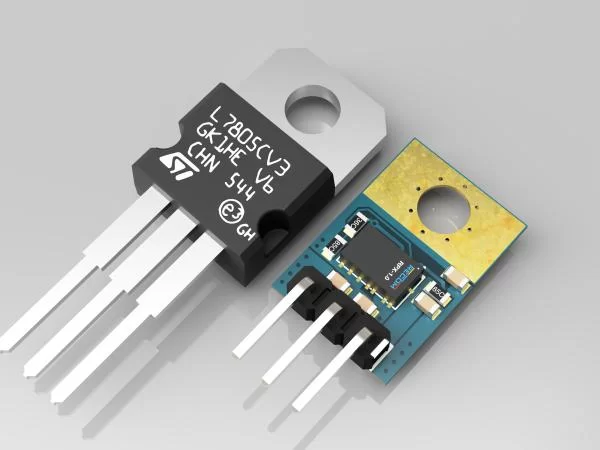Linear voltage regulators are used to maintaining a steady output voltage. They are step-down converters where the input voltage is always higher than the output voltage. The output voltage can be adjusted by external resistors. 78xx series is a very popular linear voltage regulator series. 78xx series, however, do not require external components for setting the output voltage.
The regulators have some dropout voltage which can be defined as the input voltage minus the desired output voltage. It should be noted that if the desired output voltage is higher than Vin-Vdropout, then the linear regulator can’t regulate the output at the desired output voltage. In LM1117, the dropout voltage is around 1.25V which is very small compared to 78xx and so it is called a Low-Dropout (LDO) regulator.
The voltage regulator ICs consists of a high-gain operational amplifier, a feedback network, and a pass transistor. The gate of the pass transistor is controlled by the output of the operational amplifier. The output voltage is sensed via a resistor divider network and is fed to the inverting pin of the OP-AMP. The sensed voltage is compared with the reference voltage and the high gain of the OP-AMP forces the reference voltage and the sensed voltage to be equal. In the 78xx series, the voltage divider ratio is fixed internally. On the other hand, in LM1117, the voltage divider ratio can be set via an external resistor. This gives the LM1117 IC flexibility in terms of output voltage.
Linear voltage regulators have a major issue. The input current required to the regulator is always the same as the output current. Additionally, the input voltage is always higher than the output voltage. Therefore, the input power is always higher than the output power. The difference is dissipated in the form of heat by the regulator. This means that the heatsink is necessary for many applications and sometimes, substantial power is wasted during regulation. To overcome these issues, buck converters can be preferred over linear regulators as they are more efficient and do not require heatsink.
Read more: BUCK CONVERTER PCB DESIGN REPLACES TO-220 REGULATORS

